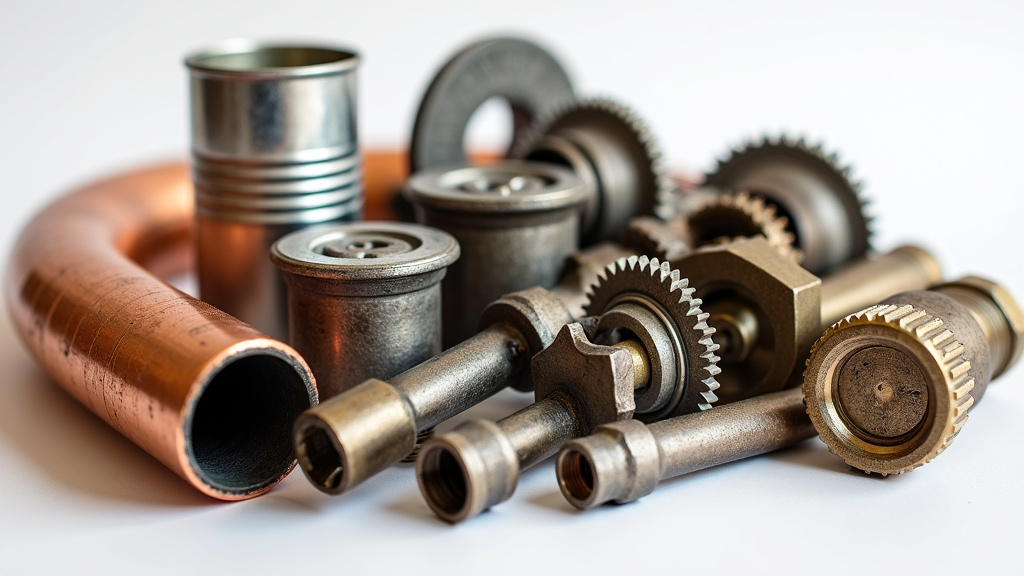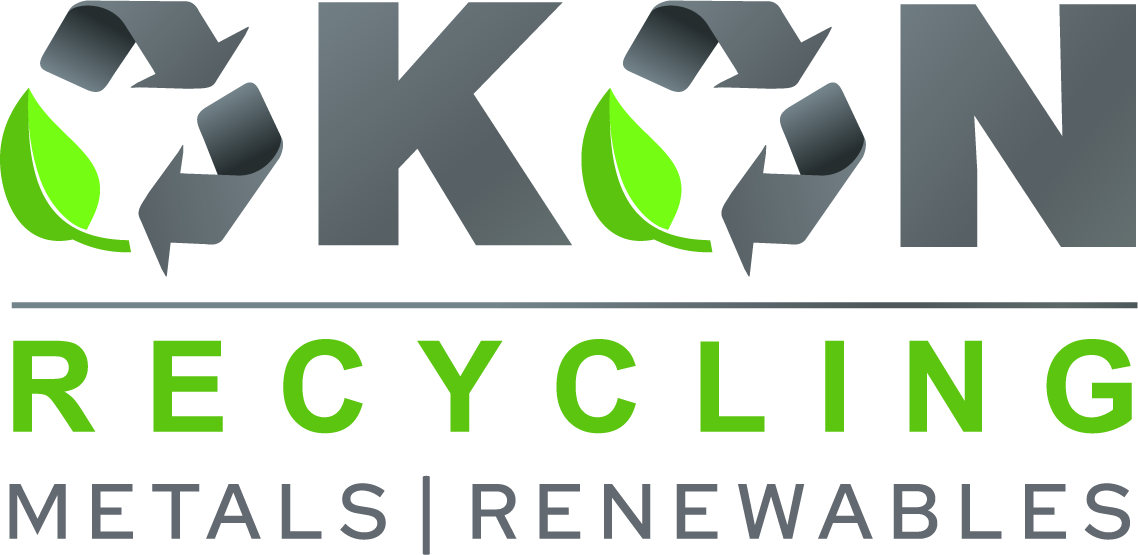5901 Botham Jean Blvd, Dallas, TX 75215
Junk Metal Recycling: Turning Waste into Valuable Resources
April 2, 2025Did you know that over 400 million tons of metal are scrapped globally each year? This figure highlights the critical importance of junk metal recycling today. As landfills overflow and natural resources dwindle, transforming discarded metal items into valuable raw materials has become essential for our planet’s future.
Junk metal recycling is more than an eco-friendly practice; it’s a powerful economic driver and a cornerstone of sustainable industry. By diverting metal waste from landfills and reprocessing it into new products, we not only reduce environmental impact but also conserve energy and preserve precious natural resources.
The global scrap metal recycling market reflects this growing significance. According to a recent report, the industry is experiencing a robust 7.2% compound annual growth rate and is projected to reach a value of $83.77 million by 2028. This trend signals a shift in how both businesses and consumers view metal waste—not as trash, but as treasure.
Types of Junk Metal Suitable for Recycling

Recycling junk metal is not only beneficial for the environment but also a smart way to declutter and earn extra cash. Knowing what can be recycled is key to maximizing the process’s efficiency. Explore the world of recyclable metals and uncover the hidden treasures in your home and workplace.
Ferrous Metals: The Magnetic Marvels
Ferrous metals contain iron and are magnetic, making them easy to identify. These metals are essential in the construction and automotive industries, valued for their strength and durability.
Common ferrous metals suitable for recycling include:
- Steel beams and pipes from construction sites
- Old car parts like engines and transmissions
- Cast iron bathtubs and radiators
- Steel appliances such as washing machines and refrigerators
- Iron tools and equipment
Recycling these metals is crucial for conserving energy and natural resources. According to experts, recycling steel alone can save enough energy to power 18 million households annually.
Non-Ferrous Metals: The Valuable Variety
Non-ferrous metals do not contain iron and are not magnetic. These metals are often more valuable in the recycling market due to their unique properties and diverse applications.
Here’s a list of common non-ferrous metals you can recycle:
- Aluminum cans, foil, and window frames
- Copper wiring and pipes
- Brass fixtures and keys
- Bronze statues and decorative items
- Lead batteries and weights
- Stainless steel kitchen appliances and cutlery
Did you know that recycling aluminum saves 95% of the energy required to produce new aluminum from raw materials? That’s a significant environmental impact!
Electronic Waste: A Goldmine of Recyclable Metals
In our digital era, electronic waste, or e-waste, has become a major source of recyclable metals. These devices often contain a mix of ferrous and non-ferrous metals, as well as precious metals.
Common sources of recyclable metals from e-waste include:
- Computer towers and laptops
- Smartphones and tablets
- Televisions and monitors
- Printers and scanners
- Gaming consoles
Recycling e-waste is not just about metal recovery; it’s also crucial for protecting the environment from hazardous materials often found in electronics. Always ensure you recycle your e-waste through certified recyclers.
Household Items: Unexpected Sources of Recyclable Metal
Many everyday items in your home contain recyclable metals. Here’s a quick list to help you identify potential recycling candidates:
- Metal coat hangers
- Aluminum foil and baking trays
- Empty aerosol cans (once completely empty)
- Metal bottle caps and jar lids
- Old pots and pans
- Broken metal garden furniture
Remember, even small items add up. Every piece of metal recycled contributes to reducing waste and conserving resources.
By understanding what types of junk metal can be recycled, you’re taking the first step towards more effective recycling. Whether it’s a rusty old bicycle or a drawer full of outdated electronics, chances are it can be recycled. So next time you’re decluttering, think twice before tossing metal items in the trash—you might just be throwing away valuable recyclables!
The Junk Metal Recycling Process

The journey of junk metal from waste to valuable resource is a fascinating process that combines advanced technology with environmental stewardship. Explore the key steps involved in this eco-friendly transformation.
Collection: The First Step Towards Sustainability
The recycling process begins with collecting junk metal from various sources, such as old appliances, vehicles, industrial scrap, and construction debris.
Recycling centers and scrapyards serve as local hubs where individuals and businesses can bring their metal waste. Some facilities even offer pickup services for larger quantities.
Modern collection methods often incorporate smart technologies, like IoT-enabled containers that monitor fill levels and optimize collection routes, enhancing efficiency and reducing transportation emissions.
Sorting: Precision Through Technology
Once collected, the mixed metals undergo a sophisticated sorting process, showcasing impressive technological advancements in recycling.
Advanced sorting technologies, such as X-ray fluorescence (XRF) and near-infrared (NIR) spectroscopy, identify and categorize different metal types with remarkable accuracy. These systems can distinguish between ferrous metals (those containing iron) and non-ferrous metals like aluminum, copper, and brass.
Artificial Intelligence (AI) and machine learning algorithms further enhance this process, enabling sorting machines to improve their accuracy over time. This precision ensures effective recycling of each metal type.
Processing: Preparing for Transformation
After sorting, the metals are processed to prepare them for melting, often involving shredding to reduce large pieces into smaller, manageable sizes.
Powerful shredders handle everything from car bodies to household appliances, breaking them into fragments. This not only makes the melting process more efficient but also helps remove non-metallic components.
Some facilities use advanced techniques like eddy current separation to further refine the sorted metals, ensuring the highest possible purity before melting.
Melting: The Heat of Transformation
The melting stage is where junk metal truly begins its transformation into a new resource. Different metals require specific melting temperatures and techniques.
Modern recycling facilities use energy-efficient furnaces that reach the high temperatures needed to melt metals while minimizing energy consumption. For instance, aluminum, which melts at a relatively low temperature, can be recycled using up to 95% less energy than producing new aluminum from raw materials.
During this process, any remaining impurities rise to the surface as slag, which is skimmed off, leaving behind pure, molten metal.
Purification: Ensuring Quality and Consistency
The final stage involves purifying the molten metal to meet specific quality standards, using various techniques depending on the metal type and its intended use.
For example, electrolysis might achieve high-purity copper, while gases might be bubbled through molten aluminum to remove dissolved hydrogen, preventing weaknesses in the final product.
Advanced spectrometers and other analytical tools monitor metal composition throughout this stage, ensuring the recycled metal meets or exceeds industry standards.
The Environmental Impact: A Sustainable Choice
The junk metal recycling process significantly reduces energy consumption compared to mining and processing new metals. For instance, recycling aluminum saves about 95% of the energy required to produce aluminum from raw materials.
This process also conserves natural resources, reduces greenhouse gas emissions, and minimizes the need for landfill space. It exemplifies how technology and environmental consciousness can collaborate to create a more sustainable future.
By understanding and supporting this process, we contribute to turning what was once considered junk into valuable resources, promoting a more circular and sustainable economy.
| Metal | Energy Savings | CO2 Emissions Reduction |
|---|---|---|
| Aluminum | 95% | 92% |
| Steel | 72% | 58% |
Environmental Benefits of Junk Metal Recycling

Junk metal recycling exemplifies environmental stewardship in our resource-hungry world. This practice not only revitalizes discarded materials but also significantly reduces the environmental impact of metal production. Here are some remarkable ways junk metal recycling benefits our planet.
Reducing Greenhouse Gas Emissions
A key advantage of recycling junk metal is its substantial impact on reducing greenhouse gas emissions. The statistics are compelling: recycling steel reduces CO2 emissions by 58% compared to primary production, equivalent to removing millions of cars from the road.
Aluminum recycling goes even further, cutting CO2 emissions by an astounding 92%. This simple yet effective method combats climate change, one can at a time.
The ripple effect of these emission reductions extends beyond the recycling plant, leading to cleaner air, healthier ecosystems, and a significant step toward mitigating global warming. Every piece of recycled junk metal contributes to this crucial environmental achievement.
Beyond emissions, junk metal recycling plays a pivotal role in conserving our planet’s finite resources, a topic we will explore next.
Conserving Natural Resources
Mining virgin ores for metal production takes a heavy toll on our planet’s resources. Junk metal recycling offers a sustainable alternative, significantly reducing the need for destructive mining practices. The conservation impact is substantial: recycling one ton of steel saves 1.4 tons of iron ore, 0.8 tons of coal, and 0.3 tons of limestone.
This conservation extends to water as well, with recycled metals using significantly less water than mining operations. For example, using recycled steel reduces water use by 40%, a critical benefit in our increasingly water-scarce world.
Additionally, junk metal recycling helps preserve biodiversity. By reducing the need for mining, we protect natural habitats, safeguarding countless species and maintaining ecological balance. This is a powerful reminder that recycling efforts have far-reaching consequences for the natural world.
Energy Conservation: A Hidden Hero
The energy savings achieved through junk metal recycling are remarkable. Recycling aluminum, for instance, saves 95% of the energy required for primary production, enough to power a 60-watt light bulb for over four hours from just one recycled aluminum can.
Steel recycling is equally impressive, saving 72% of the energy needed for primary production. To put this into perspective, the energy saved by recycling one ton of steel could power an average home for over six months.
These energy savings cascade through the production chain, reducing our overall carbon footprint and lessening dependence on fossil fuels. It is a win-win for both the environment and energy conservation efforts.
Minimizing Landfill Waste
Junk metal recycling plays a crucial role in waste reduction, diverting significant amounts of metal from landfills. This not only conserves valuable landfill space but also prevents potential soil and water contamination from metal leachate.
The circular nature of metal recycling means many metals can be recycled indefinitely without losing their properties. For example, 75% of all aluminum ever produced is still in use today, thanks to efficient recycling practices.
By keeping metals in circulation, we are not just reducing waste; we are building a more sustainable, circular economy. This approach minimizes the environmental impact of metal production and consumption, creating a more resilient and eco-friendly industrial system.
Best Practices for Junk Metal Recycling

As we’ve discussed, proper junk metal recycling is essential for environmental sustainability and resource conservation. By implementing best practices, individuals and businesses can enhance the efficiency and effectiveness of their recycling efforts.
Key practices include thorough sorting of different metal types, removing non-metal components before recycling, and ensuring safe handling of potentially hazardous materials. These steps not only improve the quality of recycled materials but also protect workers and the environment from harm.
To elevate your recycling efforts, consider partnering with a reputable company like Okon Recycling. With over 100 years of industry experience, they offer guidance to ensure your practices are efficient and compliant with laws and regulations. Their team provides expert advice on sorting techniques, safe handling, and regulatory compliance, helping maximize the value of your scrap while minimizing environmental impact.
Ready to enhance your recycling? Contact Okon Recycling at 214-717-4083 to learn more about their services and how they can help you implement these best practices.
